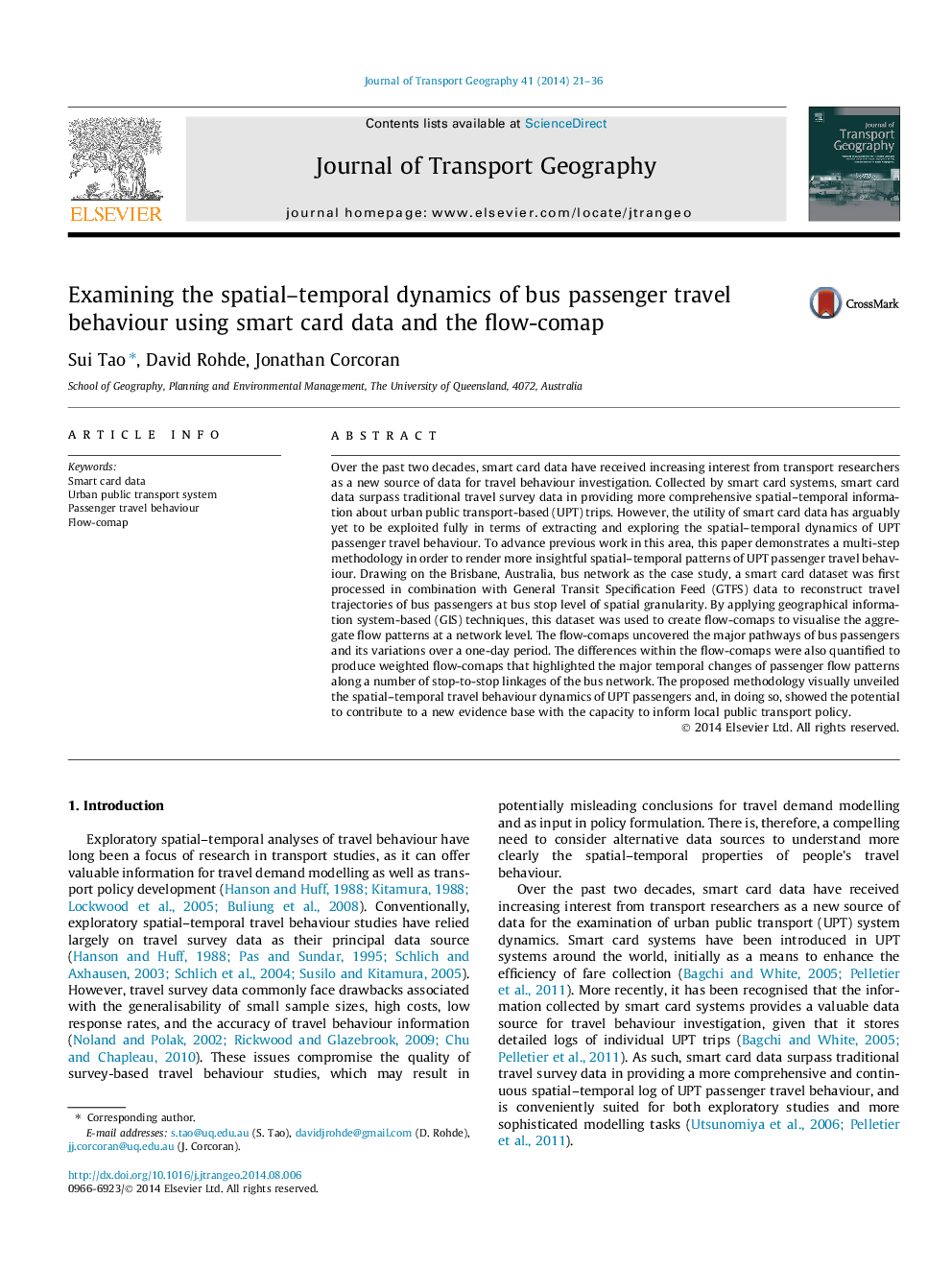| Article ID | Journal | Published Year | Pages | File Type |
|---|---|---|---|---|
| 7485981 | Journal of Transport Geography | 2014 | 16 Pages |
Abstract
Over the past two decades, smart card data have received increasing interest from transport researchers as a new source of data for travel behaviour investigation. Collected by smart card systems, smart card data surpass traditional travel survey data in providing more comprehensive spatial-temporal information about urban public transport-based (UPT) trips. However, the utility of smart card data has arguably yet to be exploited fully in terms of extracting and exploring the spatial-temporal dynamics of UPT passenger travel behaviour. To advance previous work in this area, this paper demonstrates a multi-step methodology in order to render more insightful spatial-temporal patterns of UPT passenger travel behaviour. Drawing on the Brisbane, Australia, bus network as the case study, a smart card dataset was first processed in combination with General Transit Specification Feed (GTFS) data to reconstruct travel trajectories of bus passengers at bus stop level of spatial granularity. By applying geographical information system-based (GIS) techniques, this dataset was used to create flow-comaps to visualise the aggregate flow patterns at a network level. The flow-comaps uncovered the major pathways of bus passengers and its variations over a one-day period. The differences within the flow-comaps were also quantified to produce weighted flow-comaps that highlighted the major temporal changes of passenger flow patterns along a number of stop-to-stop linkages of the bus network. The proposed methodology visually unveiled the spatial-temporal travel behaviour dynamics of UPT passengers and, in doing so, showed the potential to contribute to a new evidence base with the capacity to inform local public transport policy.
Keywords
Related Topics
Life Sciences
Environmental Science
Environmental Science (General)
Authors
Sui Tao, David Rohde, Jonathan Corcoran,
